Aprender a patinar sobre hielo depende de tu edad, mentalidad y el equipo que uses. Los niños suelen aprender más rápido porque son valientes y naturalmente flexibles. Los adultos, aunque más lentos al empezar, pueden sobresalir con enfoque y fuerza. El equipo adecuado, como los Snowfeet* Skiskates, puede ayudar a ambos grupos ofreciendo mejor control y reduciendo el miedo a caer. Aquí tienes un resumen rápido:
- Niños: Aprenden más rápido gracias a su flexibilidad y valentía. Lo toman como un juego, haciendo que el progreso sea divertido y rápido.
- Adultos: Adoptan un enfoque más analítico pero pueden tener dificultades con el miedo y la flexibilidad reducida. El equipo adecuado y la paciencia son clave.
- El equipo importa: Patines más cortos como Snowfeet* (44 cm) son más fáciles de controlar, se ajustan a zapatos de invierno normales y hacen que aprender sea menos intimidante para todos.
Así que, ya tengas 6 o 60 años, patinar sobre hielo es posible, con la mentalidad y las herramientas adecuadas.
¿Es demasiado tarde para empezar a patinar sobre hielo? | Los adultos también patinan || Entrenadora Michelle Hong
Diferencias físicas entre aprendices niños y adultos
Cuando se trata de patinar, niños y adultos tienen diferentes características físicas, y estas diferencias pueden influir en la rapidez con que adquieren la habilidad. El equipo adecuado puede ayudar a cerrar la brecha, haciendo que el proceso de aprendizaje sea más fluido para todos.
Por Qué los Niños Aprenden Más Rápido: Flexibilidad y Valentía
Los niños tienen una ventaja natural gracias a su flexibilidad, centro de gravedad más bajo y actitud intrépida. Estas características no solo les ayudan a recuperarse rápidamente de las caídas, sino que también les permiten dominar lo básico en tan solo 4–8 semanas. De hecho, muchos niños pueden patinar con confianza después de solo unas pocas lecciones, a menudo sin caerse.
Fortalezas y Desafíos de los Adultos: Potencia vs Flexibilidad
Los adultos, por otro lado, se apoyan en su fuerza muscular y conciencia corporal para generar potencia. Pero aquí está el problema: a menudo enfrentan una flexibilidad reducida y un miedo más fuerte a caer. Este miedo puede hacer que aprender sea un poco más intimidante, resaltando la importancia de tener el equipo de protección adecuado para generar confianza y calmar esos nervios.
Cómo Snowfeet* Skiskates Ayudan a Ambos Grupos de Edad
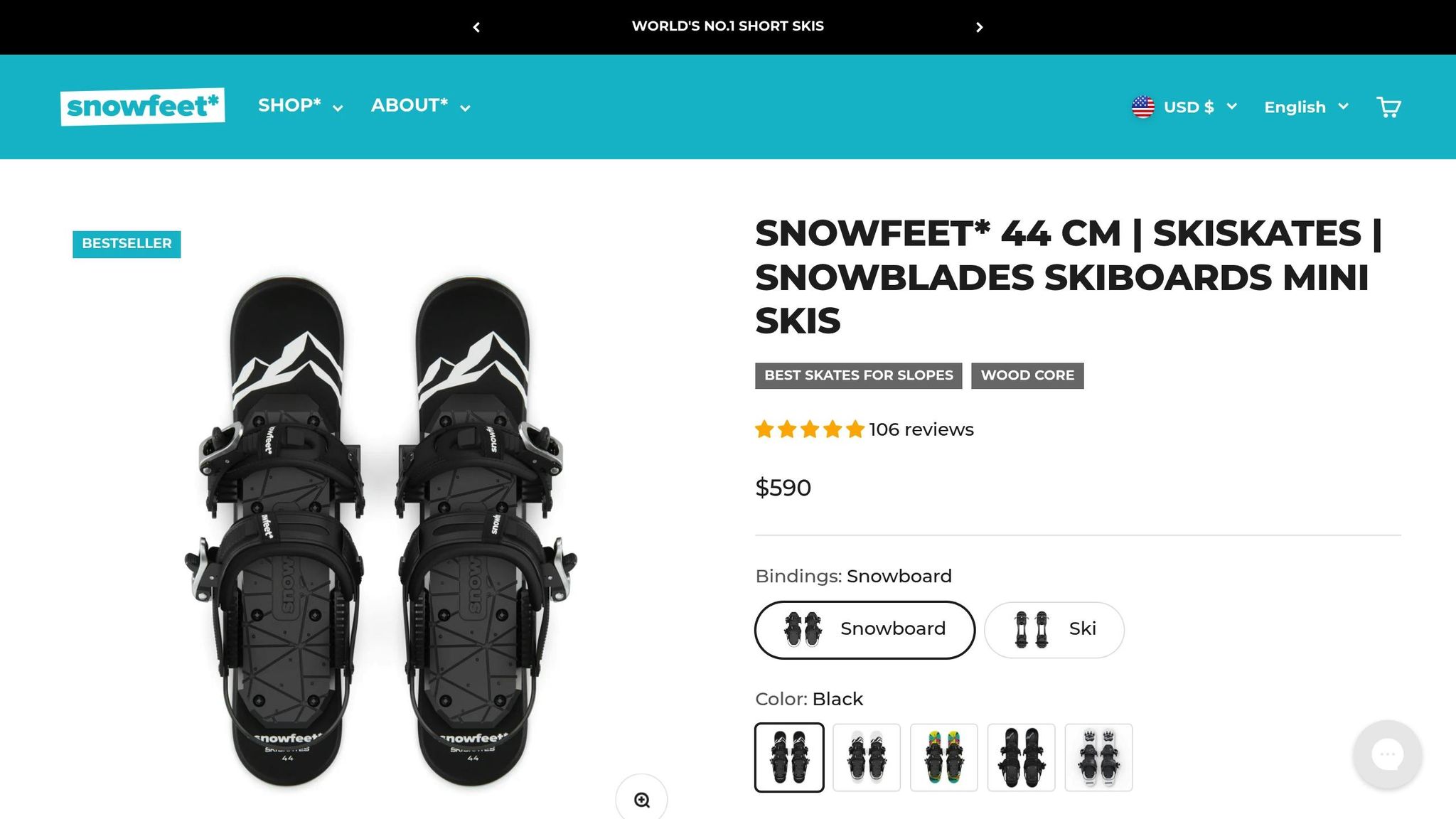
Snowfeet* Skiskates (que miden solo 44 cm) son un cambio radical para aprendices de todas las edades. A diferencia de los esquís tradicionales que miden 5–6 pies de largo de marcas como Rossignol o Salomon, estos patines compactos y ligeros son mucho más fáciles de manejar. Funcionan con zapatos de invierno normales o botas de snowboard, haciéndolos accesibles y prácticos. Para los niños, ofrecen la maniobrabilidad necesaria para mantenerse ágiles; para los adultos, proporcionan mejor equilibrio y reducen el miedo a caer. Esto los convierte en la combinación perfecta para las necesidades físicas de ambos grupos, preparando el terreno para una experiencia de aprendizaje más agradable. Además, combinan perfectamente con los factores mentales y emocionales que exploraremos a continuación.
Diferencias en el Aprendizaje Mental y Emocional
Cuando se trata de patinaje sobre hielo, los niños y los adultos tienen mentalidades completamente diferentes en la pista. Para los niños, patinar es pura diversión y exploración: se lanzan sin pensarlo demasiado. Los adultos, en cambio, a menudo enfrentan bloqueos mentales como el miedo al fracaso o sentirse cohibidos.
Ventajas mentales y emocionales de los niños
Los niños tienen una ventaja natural para aprender nuevas habilidades. Sus cerebros están diseñados para el aprendizaje motor y no temen tomar riesgos. Este enfoque lúdico y sin presión facilita que prueben nuevos movimientos y se adapten rápidamente. Se preocupan menos por caer y se enfocan más en descubrir lo que pueden hacer en el hielo.
Fortalezas mentales y barreras emocionales de los adultos
Los adultos aportan grandes fortalezas, como concentración, paciencia y la capacidad de desglosar movimientos complejos en pasos manejables. Pero aquí está el problema: el miedo a caer y la vergüenza de resbalar pueden frenarlos. Chique Sport lo expresa perfectamente:
"Caer puede ser un miedo mayor para los adultos que para los niños: ¡los niños tienen menos miedo y menos distancia para caer! Pero saber cómo caer correctamente puede en realidad aumentar tu confianza en el hielo, ya que te sentirás más preparado para cualquier resbalón."
Este miedo a menudo conduce a tensión, sobrepensar y movimientos rígidos, lo que puede desequilibrar. Usar el equipo adecuado puede ayudar a aliviar estas preocupaciones y hacer la experiencia más agradable.
Construyendo confianza con mejor equipo
Una forma de superar estos obstáculos emocionales es invirtiendo en equipo de alta calidad. Un equipo confiable puede hacer una gran diferencia en cómo te sientes sobre el hielo. Como Riedell señala:
"comprar equipo de calidad hará que aprender a patinar sobre hielo sea más fácil y divertido."
Snowfeet* Skiskates son un gran ejemplo de esto. Su diseño compacto de 44 cm funciona con zapatos de invierno normales, haciéndolos fáciles de usar tanto para niños como para adultos. Además, la longitud más corta reduce el apalancamiento al caer, lo que puede hacer que las caídas se sientan menos intimidantes y mejorar la maniobrabilidad.
Los ayudas de equilibrio son otra herramienta fantástica, especialmente en las primeras etapas de aprendizaje. SwimRight Academy explica:
"los patines de equilibrio o zapatos de ruedas pueden ser una introducción efectiva. En esta etapa, los niños están trabajando en dominar el equilibrio, que es esencial para patinar. Usa patines de equilibrio o zapatos de ruedas para ayudarles a ganar confianza antes de que prueben patines de ruedas completos."
Comenzar con un equipo fácil de manejar crea un ciclo positivo: cada pequeño éxito construye confianza, lo que motiva a los aprendices a seguir esforzándose. Esta combinación de comodidad mental y diseño inteligente es por lo que los Snowfeet* Skiskates son tan populares tanto entre niños como adultos que buscan encontrar su ritmo en el hielo.
sbb-itb-17ade95
Consejos para principiantes, niños y adultos
Comenzar tu aventura en el patinaje sobre hielo puede ser emocionante, ya seas niño o adulto. Aunque el enfoque puede variar según la edad, lo básico es lo mismo: concéntrate en la seguridad, practica la paciencia y usa el equipo adecuado. Ya sea que estés guiando a un niño de 5 años o pisando el hielo por primera vez como adulto, estos consejos harán que el proceso sea más agradable.
Métodos de aprendizaje para diferentes edades
Diferentes edades requieren métodos de enseñanza ligeramente distintos, pero el objetivo siempre es construir confianza y divertirse.
Para niños, hazlo divertido. Los niños aprenden mejor cuando se están divirtiendo, así que convierte el patinaje en un juego. Comienza con actividades como "caminar como pingüino", donde caminan con los pies separados, o juega a la "estatua", donde se deslizan y se congelan en poses graciosas. Enséñales que caer es parte del proceso, ¡no es gran cosa! También puedes preparar pequeños circuitos de obstáculos o desafíos divertidos para mantenerlos motivados y emocionados por aprender.
Para adultos, tómalo paso a paso. Comienza parándote firmemente, desplazando tu peso de forma estable y practicando pequeños pasos deslizantes. Flexiona ligeramente las rodillas para mayor estabilidad, inclínate hacia adelante para mantener el equilibrio y usa los brazos para controlar tus movimientos. Ve a tu propio ritmo: no hay prisa.
Sin importar la edad, acostumbrarse a la sensación de estar sobre el hielo es clave. Muchas pistas de hielo ofrecen ayudas de equilibrio con forma de pingüino para niños, y algunas incluso tienen versiones para adultos. No dudes en pedir ayuda al personal si la necesitas.
Conceptos básicos de seguridad y comodidad
La seguridad y la comodidad van de la mano, especialmente cuando estás aprendiendo algo nuevo. Aquí tienes algunos elementos esenciales para tener en cuenta:
- Aprende a caer de forma segura. Si sientes que vas a caer, mete la barbilla y trata de aterrizar de lado o sobre las rodillas. Esto reduce el impacto y te ayuda a evitar lesiones.
- Atúntate los patines correctamente. Comienza ajustando bien en los dedos y sube hacia arriba para un soporte sólido del tobillo. Termina con un doble nudo firme para mantener todo seguro. Si alquilas patines, no dudes en pedir ayuda para atarlos.
- Supervisa a los jóvenes skaters. Siempre mantén un ojo en los niños mientras aprenden. Elige momentos más tranquilos en la pista y busca lugares con barreras a las que puedan agarrarse.
- Tómate descansos y estira. Patinar puede ser agotador, especialmente para principiantes. Descansa cuando sea necesario para evitar la fatiga y reducir el riesgo de caídas. Estira dinámicamente antes de patinar y haz estiramientos estáticos después para evitar que los músculos se pongan rígidos.
Por qué los Snowfeet* Skiskates son geniales para principiantes
Aunque la técnica adecuada es crucial, el equipo correcto puede hacer una gran diferencia. Ahí es donde entran los Snowfeet* Skiskates: son una opción fantástica para principiantes de todas las edades.
Skates más cortos significan caídas más suaves. Los patines de hielo tradicionales pueden parecer intimidantes, especialmente para adultos. Los Snowfeet* Skiskates, con solo 44 cm de largo, son más fáciles de maniobrar y reducen la gravedad de las caídas. Esto puede ser un gran impulso de confianza, especialmente para quienes tienen miedo de caer.
No se requieren botas especiales. Una de las mejores características de los Snowfeet* Skiskates es su compatibilidad con zapatos de invierno normales. Los niños pueden usar sus botas de nieve y los adultos pueden quedarse con su calzado cómodo de invierno. Esta familiaridad ayuda a que los principiantes se sientan más a gusto.
Portátiles y versátiles. Estos skates son lo suficientemente pequeños para caber en una mochila, lo que los hace perfectos para sesiones de práctica improvisadas. A diferencia de los esquís o patines tradicionales, puedes usarlos casi en cualquier lugar: pistas de hielo, estanques congelados, patios nevados o incluso pequeñas colinas. Esta flexibilidad significa que puedes practicar en entornos sin presión antes de ir a áreas más concurridas.
Rentable. Los Snowfeet* Skiskates también son una elección financiera inteligente. Desde $250 para los Mini Ski Skates (38 cm) y $575 para la versión de 44 cm, son más asequibles que comprar equipo separado para patinaje sobre hielo y esquí. Además, están diseñados para crecer con tus habilidades, por lo que no necesitarás actualizarlos con frecuencia.
Perfecto para familias. Con los Snowfeet* Skiskates, una sola pieza de equipo funciona para todos: niños y padres por igual. Esto facilita practicar juntos y compartir la experiencia. Además, la comodidad de usar zapatos de invierno normales puede ayudar a los niños a sentirse más seguros al dar sus primeros pasos sobre el hielo.
Ya sea que estés enseñando a un niño o aprendiendo como adulto, los Snowfeet* Skiskates pueden hacer el proceso más fluido, seguro y mucho más divertido.
Snowfeet* vs Esquís y Snowboards Tradicionales
Elegir el equipo adecuado es muy importante en los deportes de invierno. Los esquís y snowboards tradicionales han sido la opción durante años, pero a menudo requieren botas especiales, fijaciones y algo de paciencia para dominar. Por otro lado, los Snowfeet* Skiskates revolucionan con un diseño compacto y características amigables para principiantes, siendo una opción moderna para quienes recién comienzan.
Por qué los Snowfeet* son ideales para principiantes
Una característica destacada de los Snowfeet* Skiskates es su tamaño. Miden solo 44 cm, mucho más cortos que los esquís tradicionales, que pueden variar entre 150 y 180 cm. Este tamaño más pequeño ofrece a los principiantes un mejor control, facilitando el manejo de giros y maniobras. Ya seas un niño o un adulto intentando aprender a esquiar, este control adicional puede marcar una gran diferencia.
¿Otra ventaja? No necesitas invertir en botas de esquí caras. Snowfeet* están diseñados para funcionar con tus zapatos de invierno cotidianos, así que puedes evitar la molestia de equipo especializado. Esto hace que sea más fácil (y barato) empezar.
La portabilidad es otra ventaja de Snowfeet*. Su diseño ligero y compacto significa que puedes meterlos en una mochila y salir a un parque local, una pendiente tranquila o incluso tu propio jardín. Esta flexibilidad te permite practicar en entornos más relajados y familiares sin necesidad de ir a una estación de esquí completa.
Y hablemos del mantenimiento. Los esquís tradicionales suelen necesitar encerado y ajuste regular para mantenerse en forma. Snowfeet*, en cambio, requieren muy poco mantenimiento, lo que los convierte en una opción de bajo mantenimiento para principiantes.
Comparando Snowfeet* con equipo tradicional
Aquí tienes un resumen rápido de cómo Snowfeet* se comparan con los esquís tradicionales y los snowboards:
| Característica | Snowfeet* Skiskates | Esquís tradicionales | Snowboards |
|---|---|---|---|
| Curva de aprendizaje | Fácil y apto para principiantes | Curva de aprendizaje más pronunciada | Moderadamente desafiante |
| Costo del equipo | Empieza alrededor de $250 | $400–$1,200+ (incluyendo botas y fijaciones) | $300–$800+ (incluyendo botas y fijaciones) |
| Portabilidad | Ligeros y caben en una mochila | Voluminosos, necesitan transporte extra | Menos compacto que Snowfeet* |
| Opciones de terreno | Funciona en pistas, parques y patios traseros | Mejor para pistas preparadas | Mejor para pistas preparadas |
| Compatibilidad de botas | Funciona con zapatos de invierno normales | Requiere botas de esquí especializadas | Requiere botas especializadas |
| Mantenimiento | Esfuerzo mínimo | Necesita encerado y afinado regular | Requiere mantenimiento regular |
Como muestra la tabla, aunque los esquís y tablas de snowboard tradicionales tienen sus fortalezas, Snowfeet* Skiskates destacan por su simplicidad y conveniencia. Están diseñados para eliminar algunas de las barreras comunes que enfrentan los principiantes, como el equipo complicado y el alto mantenimiento. Al enfocarse en la facilidad de uso, portabilidad y asequibilidad, Snowfeet* hacen que los deportes de invierno sean más accesibles para todos.
Conclusión: Edad vs Equipo en el Patinaje sobre Hielo
Cuando se trata de patinaje sobre hielo, el equipo adecuado puede marcar toda la diferencia, sin importar tu edad. Los niños aportan una energía intrépida al hielo, mientras que los adultos a menudo dependen del enfoque y la determinación. Snowfeet* Skiskates son un cambio radical para ambos. Diseñados para edades de 5 a 105 años, su compacto marco de 17 pulgadas (44 cm) ofrece un control increíble, facilitando el aprendizaje para principiantes - ya sean jóvenes o jóvenes de corazón.
La belleza de estos skiskates está en su simplicidad. Puedes "simplemente abrocharte y deslizarte" e incluso "dominar lo básico en minutos". Este diseño sin complicaciones ayuda a aliviar el miedo a caer, mientras que su construcción ligera y portátil significa que puedes practicar donde haya nieve. Mételos en una mochila, átales sobre tus botas de invierno normales, y estarás listo para salir.
Así que, aunque la edad pueda influir en cómo abordas el aprendizaje, Snowfeet* hace que el éxito sobre el hielo sea accesible para todos. Con su diseño pensado y facilidad de uso, acercan la alegría de patinar - ya sea que estés dando tu primer deslizamiento o redescubriendo la emoción del hielo.
Preguntas frecuentes
¿Cómo pueden Snowfeet Skiskates ayudar a los adultos principiantes a sentirse más seguros mientras aprenden a patinar sobre hielo?
Snowfeet Skiskates son una excelente opción para adultos que son nuevos en los deportes de invierno y quieren adentrarse en la experiencia con facilidad. Gracias a su diseño compacto y ligero, son mucho menos intimidantes que los esquís o tablas de snowboard tradicionales, brindando a los principiantes más control y confianza sobre el hielo.
¿Qué es aún mejor? No necesitas gastar en equipo caro. Los Snowfeet Skiskates se sujetan directamente a tus botas de invierno normales, manteniendo todo simple y sin complicaciones. Esto significa que puedes concentrarte en dominar tu equilibrio y técnica sin sentirte agobiado por equipos complicados. Además, su fácil maniobrabilidad reduce las posibilidades de caídas, haciendo que todo el proceso de aprendizaje sea más seguro y mucho más divertido.
¿Qué hace que Snowfeet Skiskates sean una mejor opción que los esquís tradicionales para niños que están aprendiendo a patinar sobre hielo?
Snowfeet Skiskates son una gran opción para niños que están empezando a esquiar. Debido a que son más cortos y compactos que los esquís tradicionales, son mucho más fáciles de manejar. Esto facilita que los principiantes aprendan movimientos básicos y se sientan más cómodos en las pistas. Además, su diseño permite giros más rápidos y mejor control al detenerse, lo que puede ayudar a reducir caídas y aumentar la confianza.
¿Otra ventaja? No necesitas botas de esquí especiales y caras para usarlos: ¡las botas de invierno normales funcionan perfectamente! Eso es una gran ventaja para las familias que buscan ahorrar dinero mientras introducen a sus hijos en los deportes de invierno. Además, son ligeros y fáciles de llevar, lo que los hace súper convenientes tanto para niños como para padres.
¿Cómo pueden los adultos mejorar su confianza y flexibilidad al aprender a patinar sobre hielo, y cómo ayudan los Snowfeet Skiskates?
Los adultos definitivamente pueden ganar confianza y mejorar su flexibilidad mientras aprenden a patinar sobre hielo. ¿Un buen consejo? Usa equipo de protección como rodilleras y protectores de cadera. Es increíble lo menos aterrador que se siente caer cuando estás protegido, permitiéndote concentrarte en tu equilibrio y técnica en lugar de preocuparte por golpear el hielo. Practicar caídas controladas también puede ayudar mucho a que te sientas más cómodo.
Si eres nuevo en el patinaje o simplemente quieres una forma divertida y menos intimidante de empezar, Snowfeet Skiskates podrían ser tu nuevo mejor amigo. Estos pequeños patines compactos ofrecen mejor control y estabilidad que los patines tradicionales, facilitando encontrar tu equilibrio y trabajar la coordinación. Son ligeros, súper fáciles de usar y mucho menos abrumadores que cargar con esquís o tablas de snowboard. Con Snowfeet Skiskates, aprender a patinar se siente menos como un desafío y más como una aventura, ¡perfecto para adultos de cualquier edad!







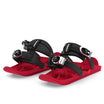
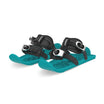












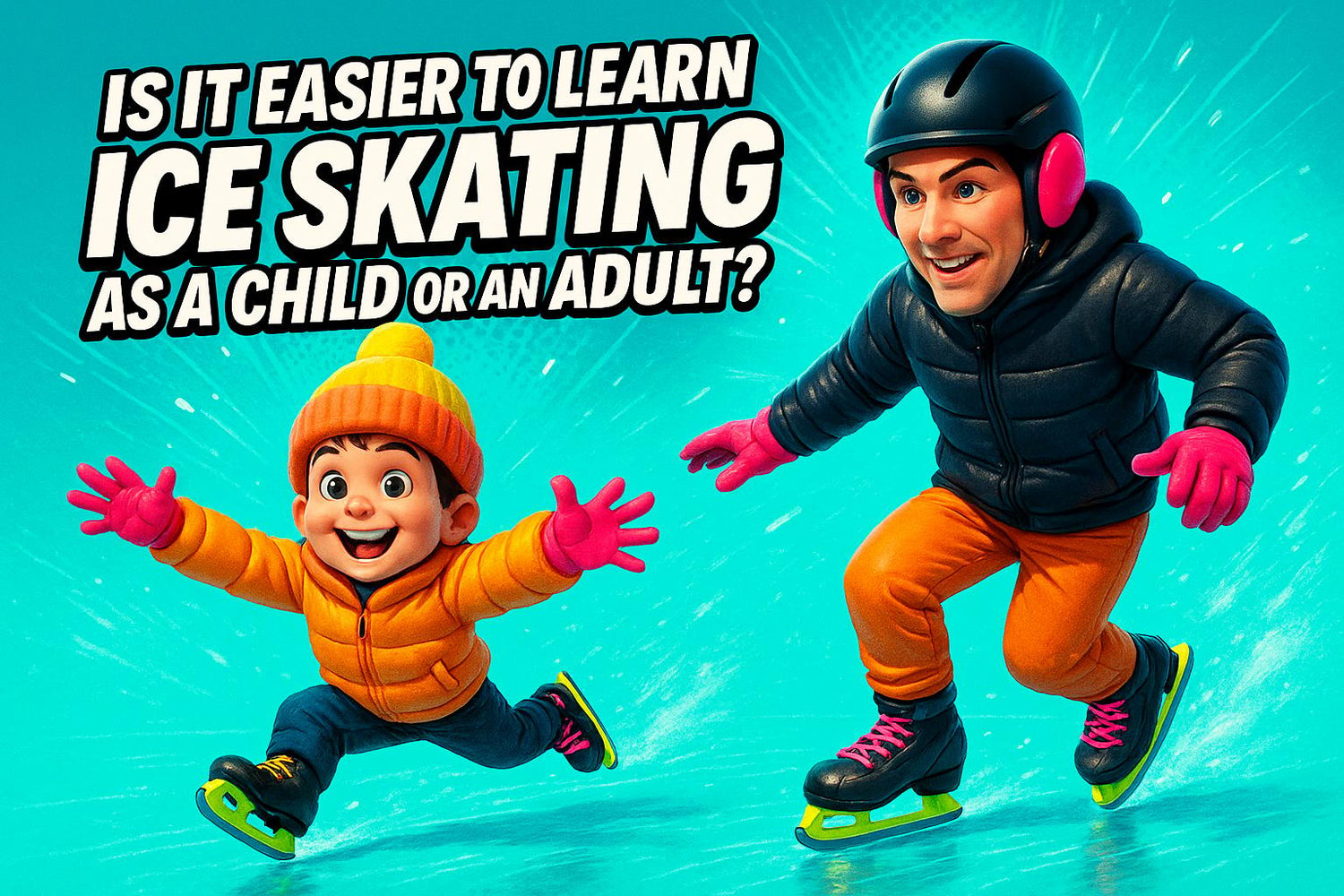
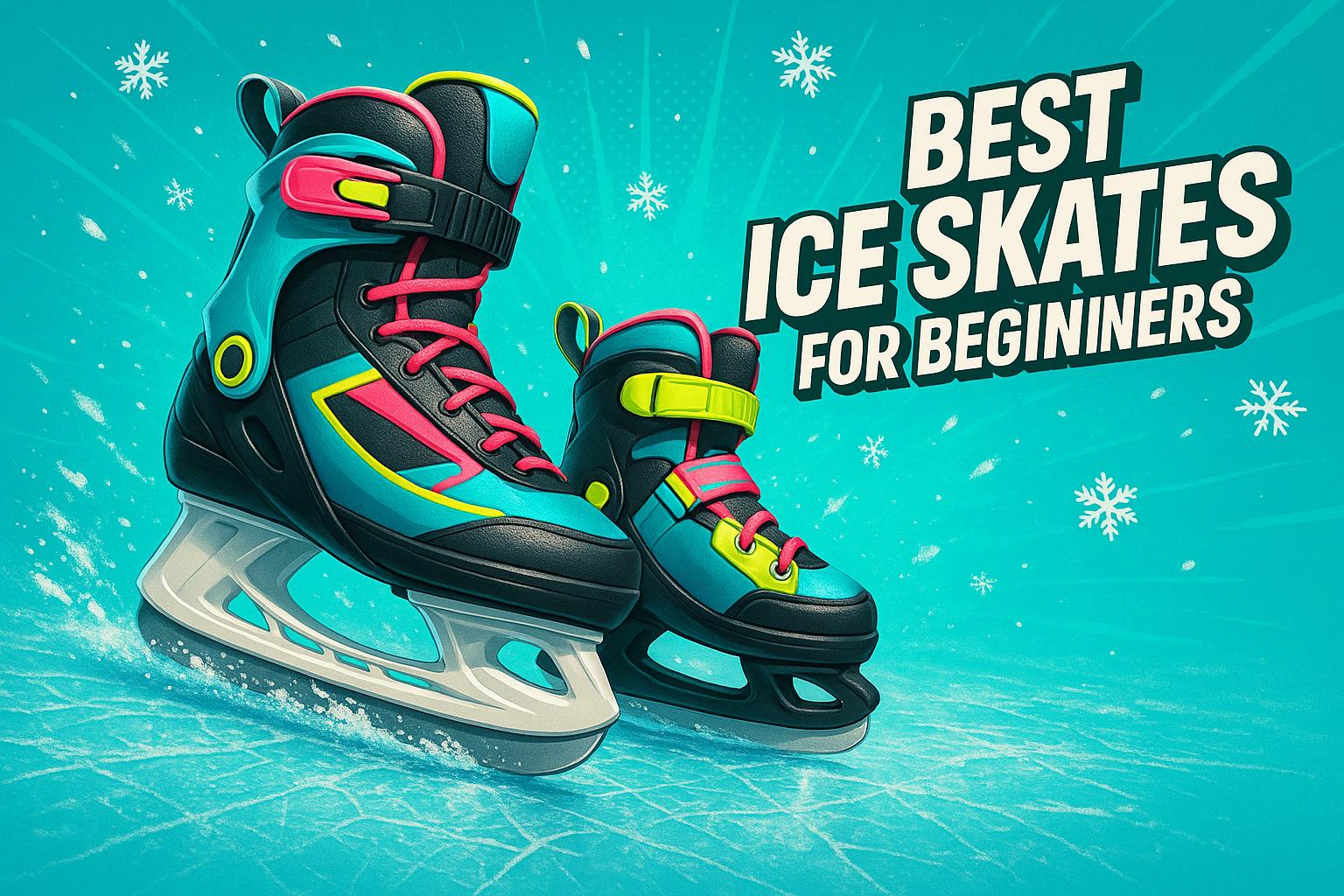
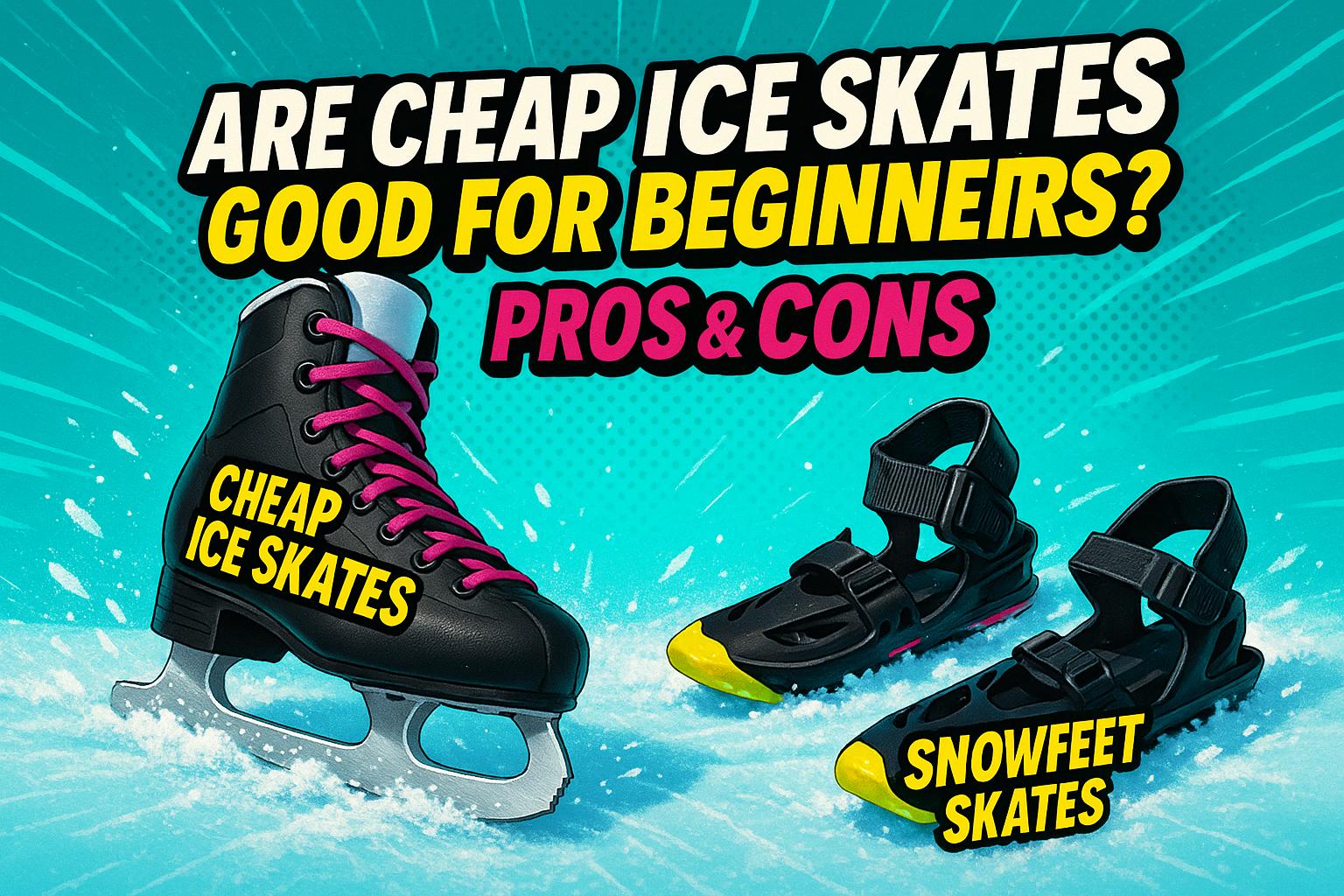




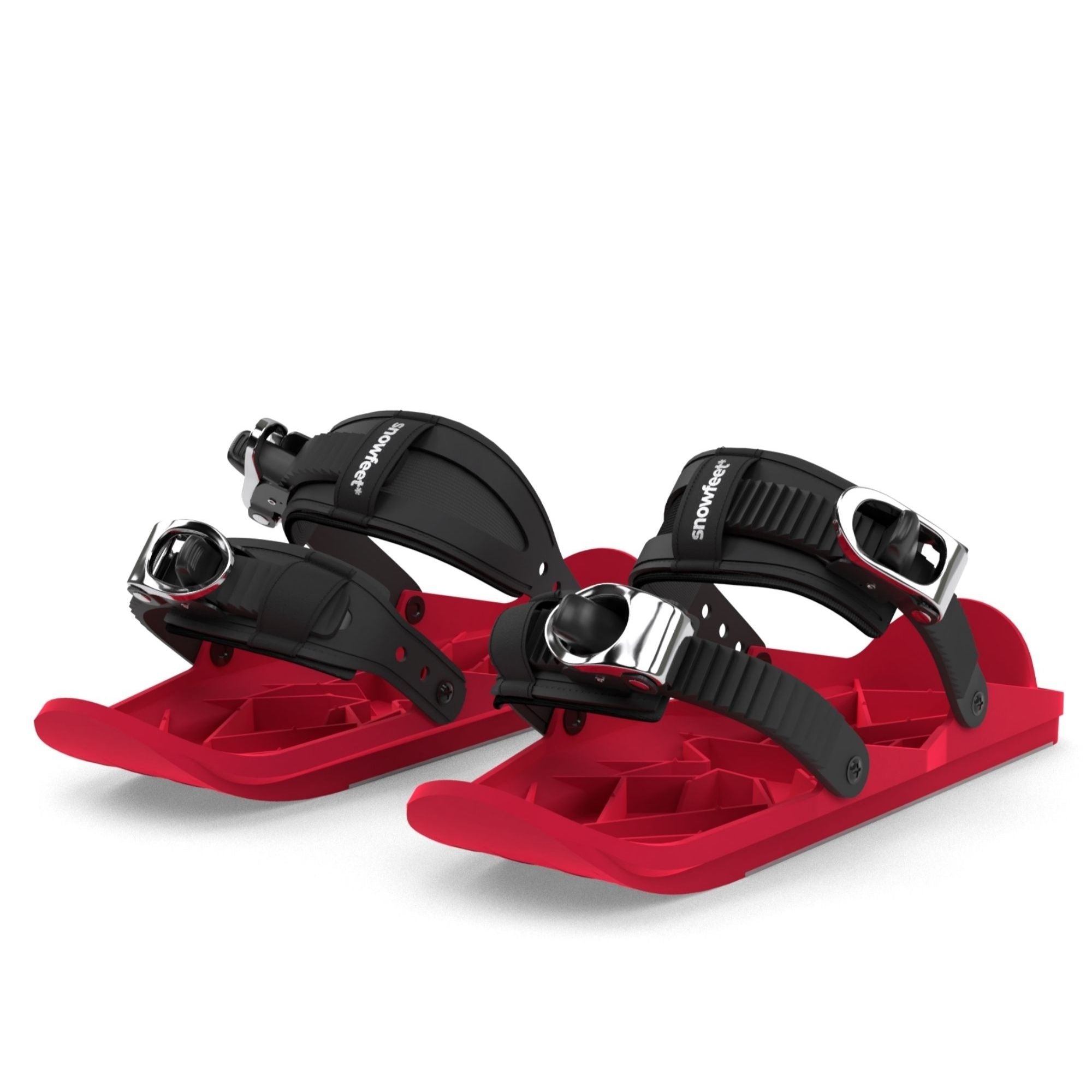
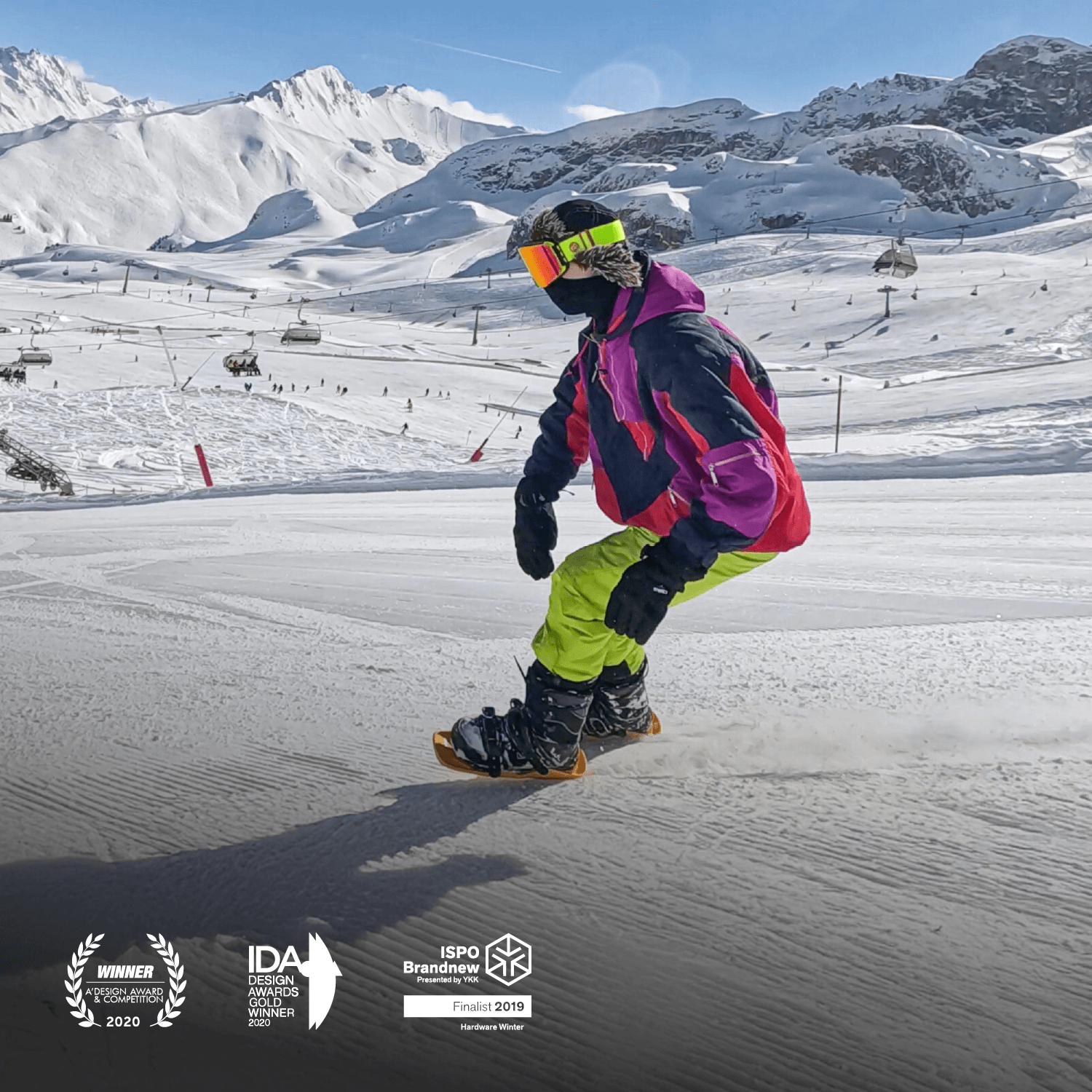




Deja un comentario
Este sitio está protegido por hCaptcha y se aplican la Política de privacidad de hCaptcha y los Términos del servicio.